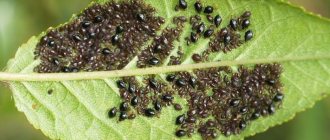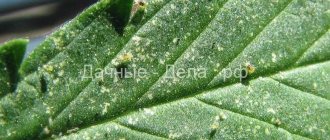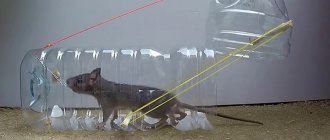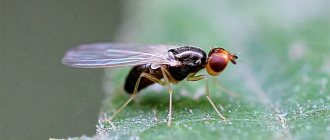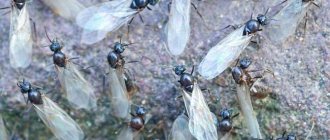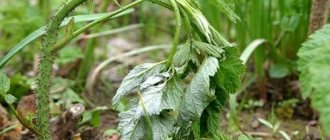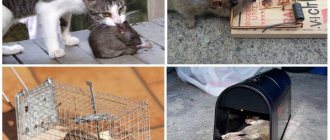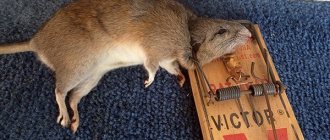In most cases, when people set rat traps, the animals die from poisoning or a broken spine when caught in the rat trap. However, if your traps are boxes and buckets that the animal can get into but cannot get out of, then you need to decide how to humanely and quickly kill it. In this article you will learn about what to do if you catch a rat and how to kill it, the better way to kill it so that it does not suffer.
IMPORTANT! Under no circumstances should you show children scenes of the killing of any animals, including rodents. This can seriously traumatize their fragile psyche! Only a trained person can kill a rat without consequences. Usually this is an adult man with a tempered psyche, who is confident in what he is doing, because... wants to protect his family, home and supplies from pests.
Nutrition and vital activity
Rats, like other rodents, are nocturnal, but as their numbers increase, you may encounter them during the day.
If we look at the Pasyuk’s diet, we will see that animal feed makes up 33-38%, vegetables – 14-15%, grain feed and bread – 48-52%. They eat best fish or minced meat and porridge. The most preferably eaten grains are oats and wheat. Corn, barley and millet are much worse for rats to eat.
The question arises, which folk remedies for rats should we choose? Let's consider everything in order: physical (mechanical), biological and chemical methods.
Eliminate rats and mice in the garden: 8 ways
In lean years or when the population is too large, it becomes more difficult to repel rodents. They can eat things they wouldn't normally touch. For example, gnawing on daffodil bulbs. If you cannot drive away the mice, you have to exterminate them. Mousetraps, snares and pesticides are used.
Deadly bait for rats and mice
The principle of operation of all baits is approximately the same. The mice eat the poisoned food and die within a few days. Bait manufacturers take into account the tastes and habits of mice and try to make the poisoned food very attractive to them. In addition, the delayed effect of poisons (4-6 days) does not allow the animal to warn its relatives about the danger of food.
There are several types of ready-made baits:
- Grain bait. The most popular and inexpensive option. Grain is a common food for mice. They not only eat it right away, but also take it to their holes as a reserve. And there other individuals join the meal. Poisoned grain is laid out in small portions near holes, passages or near water sources.
- Granular bait works better than grain bait because it does not become soggy and moldy for a long time. The granules are made up of flour, grains and sugar with “delicious” flavors. Granules are used in the same way as grain.
- Solid bait is a wax briquette with food additives. They are moisture resistant, so they work great in open beds. Mice and rats not only love to chew, but also to sharpen their teeth. This means they won’t pass by the “fragrant piece”.
- Dough bait is especially good for rats. Rats are smarter than mice and are more difficult to get rid of. Moreover, rats prefer animal food and may not respond to grains or pellets. But soft baits seem like a real treat to rats.
- Foam bait is similar to polyurethane foam in a can. It fills narrow gaps and does not lose its shape for 14 days. Mice get dirty in it, begin to lick it off the fur and thus eat the poison. It is also recommended to fill holes with foam.
As you can see, the range of poisoned baits is large. However, it seems to us that grain, hard briquettes and granules are most suitable for the garden.
Traps against mice from scrap materials
It is not possible to completely get rid of mice in the garden using traps or mousetraps. Still, there are too many animals in such a large area. Nevertheless, gardeners also use traps as an auxiliary method.
Bucket and jar trap
To make a trap, a bucket is half filled with water.
An aluminum can is placed on a rod (thick wire, branch, tube, pin, etc.). The axle is placed on the edges of the bucket, and the jar is greased with something tasty and strong-smelling. For example, chocolate spread. Boards are placed on both sides of the bucket as a platform. Using them, the mouse can easily climb onto the can. But under the weight of the animal, the can will begin to rotate, and the mouse will fall into the bucket. The design is complex, but working. People managed to lure a dozen mice into a similar trap.
Bottle trap
Distribute a little unrefined vegetable oil over a plastic or glass bottle so as to lubricate it well from the inside. The bottle is fixed in an inclined position with the neck up. The smell of oil will attract the mouse into the trap, but the slippery walls of the bottle prevent it from getting back out.
Now you have the answer to the question of how to get rid of mice in your dacha. Of course, I would like to limit myself to humane folk remedies, like mint with coriander or a couple of elderberry bushes behind the barn. But there are times when rodents declare real war on us. Therefore, information about the use of poison may also be useful.
We wish you success and great harvests!
Physical (mechanical) method - 5 useful techniques
In the current unstable economic situation, this folk remedy is the simplest and least expensive. The owner of the house just needs skill in installing traps and crushers for catching rats, as well as various tricks.
There is a large selection of fishing gear on sale. What I would like to recommend first of all:
- When choosing a crusher or rat trap, look at the elasticity of the spring and the weight of the wooden or metal base to which the spring mechanism is attached.
- The spring should be tight and charge with force. This will allow for a more lethal effect when triggered. There should be no gap, or it should be minimal, between the activated spring and the surface to which it is attached.
- The base for the rat trap must be stable both in area and in weight. When the spring is activated, so that the rat trap does not bounce.
- And the most important thing is to constantly change the bait, as well as the position of the rat trap and be able to disguise it . Then you will achieve results.
- A positive effect can be achieved by “flooding” rat holes with water or digging up a garden plot. Rats make shallow passages between burrows, so you can disrupt their livelihoods by digging up the ground.
Preparations based on phosphides
This group includes products based on zinc phosphide, magnesium phosphide and aluminum phosphide, of which the first is zinc phosphide. All of them react with moisture in the air, releasing phosphine, a poisonous gas that kills rats (as well as all other mammals and insects that find themselves in the treated area).
Phosphides are also dangerous for humans and all domestic animals, and therefore their use in residential premises is strictly prohibited. They are used only in industrial enterprises, in workshops from which all workers have previously been removed.
So if you read somewhere that phosphides (or phosphine) are excellent at killing rats, then buying such products for use at home would not be the best idea.
Biological method - a traditional folk remedy for fighting rats
This folk remedy for fighting rats involves keeping specialized breeds of cats or dogs in the house, which can become biological enemies of rodents. Not all cats and dogs decide to fight rats, since they are larger and more aggressive than other synanthropic rodents.
This folk remedy for fighting rats is ineffective, as it depends on your pet who lives in your house. But sometimes it gives its results if you alternate it with other methods.
Chemical method - 8 ideas for independent struggle
You can expect more tangible results from this method if used correctly.
In the folk recipe there are a lot of methods for using available food and industrial chemicals or using plants with toxic properties to get rid of rats:
- A good result comes from adding construction putty to various cereals, as well as porridge. When eating this bait in the stomach and intestines of pasyuks, this building material hardens, which causes the death of rodents.
- It is also advisable to add medical or construction plaster. Freshly prepared bait is placed in places most frequently visited by rats. The effect is fatal when food enters the gastrointestinal tract of rodents.
- Extruded food, which quickly swells and is eaten by rats with pleasure, is of great attractiveness to rodents. You can add baking soda or boric acid to these feeds. The effect of this bait will not be long in coming. Both of these components, when ingested, will enter into a chemical reaction with gastric juice, and the gas released will poison the rats.
- Minced meat can also be used as a base for bait. Minced meat, of course, is a little expensive for these purposes, but freshly prepared minced fish is very suitable for mixing it with ash. If ingested by a rat, this mixture will also lead to the death of the bees.
- In addition to the bait method, folk remedies for fighting rats use treatment of rodent burrows with bleach, which can easily be found in any home.
- Found rat holes can be treated with kerosene or diesel fuel, but this only applies to those rodent holes that are located outside the house. Fire safety measures must be observed.
- Exhaust gas, which is produced when an internal combustion engine is running, can be released into rat holes. When gas appears from other holes, they must be trampled down to achieve the poisoning effect.
- Calcium carbide can be used with caution. By placing it in a hole and watering it with water, the carbide will begin to decompose, releasing acetylene, which irritates and affects the respiratory tract.
Ratobor baits: instructions for use
Bait (pellets, dough briquettes, grain) is laid out on substrates made of dense material (tin lids, cardboard boxes, plastic containers, trays, etc.) in places where rodents are likely to appear or appear (along walls, near burrows). The interval between baits is 2-4 m, depending on the area of the room and the number of rodents. The placement of baits is repeated after 7-10 days until the rodents completely disappear.
The drug is produced in a box (50 g), bags (50, 100, 250 g), a feeding container (200 g), a zip lock bag (200 g).
For ease of use, the rodenticide is also packaged in special Double box containers, which themselves serve as a stand for the bait. This form of packaging increases the palatability of the grain “filling” and protects it from being taken away by animals. The contents of a double container weighing 200 g are enough to treat a room of 20-30 sq.m.
How to get rid of rats using folk remedies (plants)
- Blackroot (ratweed) is a poisonous plant that can be found everywhere, it grows like a weed. This plant, namely a decoction of crushed root, causes suffocation. An infusion of ratwort root is mixed with well-eaten food for rats.
- Swamp wild rosemary is a plant that repels rats with its smell and creates unbearable conditions for their life.
- Wormwood and peppermint - these plants are recommended to be planted in a personal plot, and dried plants can also be laid out in the house in places frequently visited by rats. These plants scare away and cause the beekeepers to flee.
- Elderberry and tomato tops are plants that contain solanine (a poisonous glycoside). The specific aroma of these plants causes panic in rats, rodents leave the house.
- Tansy - under the influence of the aroma of this plant, rats stop breeding and subsequently disappear from the territory inhabited by them.
- Essential oils of camphor and other plants, more resistant to fresh or dried plants. It is better to use essential oils to repel rats, as they stay on the surface longer and produce results.
- Tobacco – this plant can be planted in your garden; rats do not like to be near tobacco. The use of smoking tobacco (shag) gives a greater effect. Shag can be scattered throughout the house where rats have been seen. It is recommended to periodically wipe the floor with the prepared tobacco infusion.
conclusions
- First of all, localize the area where rodents are active.
- Experimentally select their diet by determining what they eat more often
- Based on the priority products, prepare poisoned baits
- Constantly change the placement of fishing gear and camouflage them to match the surrounding environment
- You cannot expect an effect from only one folk remedy; you need to change them periodically or combine them. Rats are “intelligent” - they immediately identify an object that is dangerous for them.
